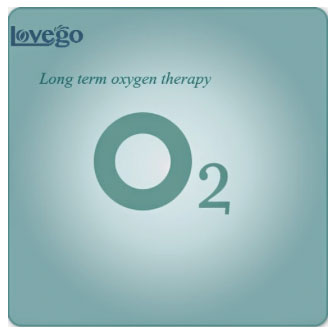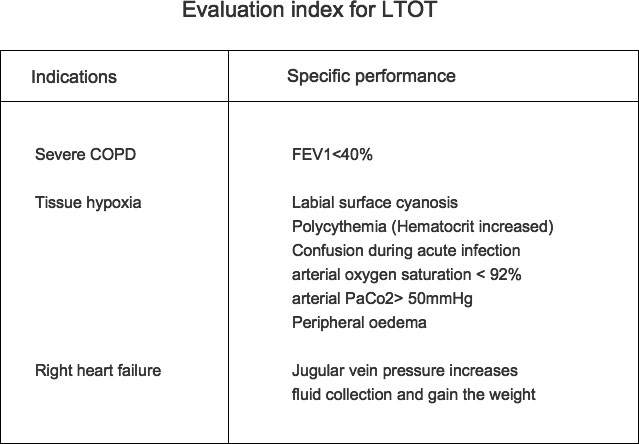Long Term Oxygen Ttherapy(LTOT)

Long term oxygen therapy(LTOT) refers to providing supplemental oxygen to the Chronichypoxaemia patients( including Sleep and Motility hypoxemia), and lasting for a long time. Most of scholars agree that the time shall be at least 6 months. The standard long term oxygen therapy shall be 24 h/d, says continuously oxygen therapy.However, some patients are hard to finish it, so when breathing supplemental oxygen forabove 18 hours everyday, we call continuously oxygen therapy.When taking 12 hours only at night(including sleeping) everyday, we call Night oxygen therapy.
To get a good effect of the oxygen therapy, the current consensus is taking at least 15 hours supplemental oxygen and make the Pao2 reach 60mmHg.
So why shall we carry out the long term oxygen therapy ?
As along with the process of COPD, many patients are with the hypoxaemia conditions, and the PaO2 of most patients is decreasing by 1.33mmHg every year.The low hypoxaemia and hypercapnia will make the pulmonary muscularized arteries spasm and increase the resistance of the pulmonary circulation,then it will form the Pulmonary hypertension, finally leads to the heart disease.The spasm of pulmonary small artery is the main cause for the dramatic increase in pulmonary artery pressure when the chronic pulmonary patients are under acute exacerbation.
By improving the hypoxaemia, the pulmonary artery pressure can go down. It is good to the disease. If not, it will make the vessel narrow and fibrosis because of the continuously spasm and PAH. Also, as the quantity of the lung capillary bed decreases and the pulmonary circulation resistance increases, the pulmonary artery pressure will increase continuously, it’ll make the right heart work overload, finally resulting in heart failure.
Stop smoking, anti-infection, diastole bronchus are the some important methods to improve and control the symptoms, but LTOT is the main factor to effect the Cor pulmonale prognostic.
To those with severe hyoxemia (PaO2<60mmHg), there are many benefits by carrying out the LTOT:
Improve the survival rate
Prevent deterioration of pulmonary hypertension
Decrease the incidence of polycythemia
Improve the sleep quality
Increase the renal blood flow
Reduce the incidence of arrhythmia
We suggest that the patient shall carry out the LTOT with below two factors:
1. The PaO2<50mmHg or between 50~60mmHg when under rest state
2. There is one of the following symptoms: secondary polycythemia/ Hypoxia at night/ Peripheral oedema/ Pulmonary hypertension.

To get a good effect, the time to breath supplemental oxygen shall be at least above 15 hours. The flow is between 1~3L/min to avoid inhibiting the respiration and the aggravating carbon dioxide retention



